Daufuskie Island in South Carolina is a beautifully pristine island getaway that boasts not only several private communities and clubs but also a rich history. When Chris and I toured the community of Haig Point we were thrilled to get a little bit of the history of the place.
Haig Point has a very long history dating back to 1735 when George Haig I purchased 500 acres on Daufuskie Island. After his death Haig Point was left to George Haig III in 1790. Years later in 1810, Haig sold the land to the Mongin family. Between 1810 and 1823, the Mongins acquired the 600-acre Freeport Plantation. This created the nearly 1,100-acre plantation which is now known as Haig Point.
In the following 124 years several different families owned the property with Charles Cauthen and Daufuskie Island Land Trust owning it in the 1950’s. In 1984 International Paper bought Haig Point and insured that the area moved forward. In 1986 International Paper set up extensive infrastructure, restored the lighthouse and hired Rees Jones to build the initial golf course. The Strachan Mansion was moved from St. Simons Island, Georgia to Haig Point where it remains today.
In 2001 International Paper transferred all common properties and the amenities to the members of Haig Point. Since 2009, Haig Point is member-operated under the traditional model of a private club.
The island’s history traces back to Pre Revolutionary War times. It was the site of a skirmish called the “Daufuskie Fight” during the Yemassee War of 1715–1717. The island was also home to a large population of Gullah inhabitants from the end of the Civil War until very recently. The Gullah are the descendants of enslaved Africans who lived in the Lowcountry regions of Georgia and South Carolina,
One of the things that Chris and I enjoyed most was getting the opportunity to walk around the ruins of some buildings. These buildings are great examples of Tabby Architecture. In the South Carolina Lowcountry, they used what they had. That included oyster shells and sand. Tabby is also known as coastal concrete and is made from a mixture of lime, sand, water and oyster shells.
The Haig Point community is the home to various Tabby Architectural structures which were part of a slave community that existed on the island up until the Civil War. While is is very difficult to think about slaves it is a reality that this was part of the history of the United States. Keeping these structures maintained and visible is part of the history of the area.
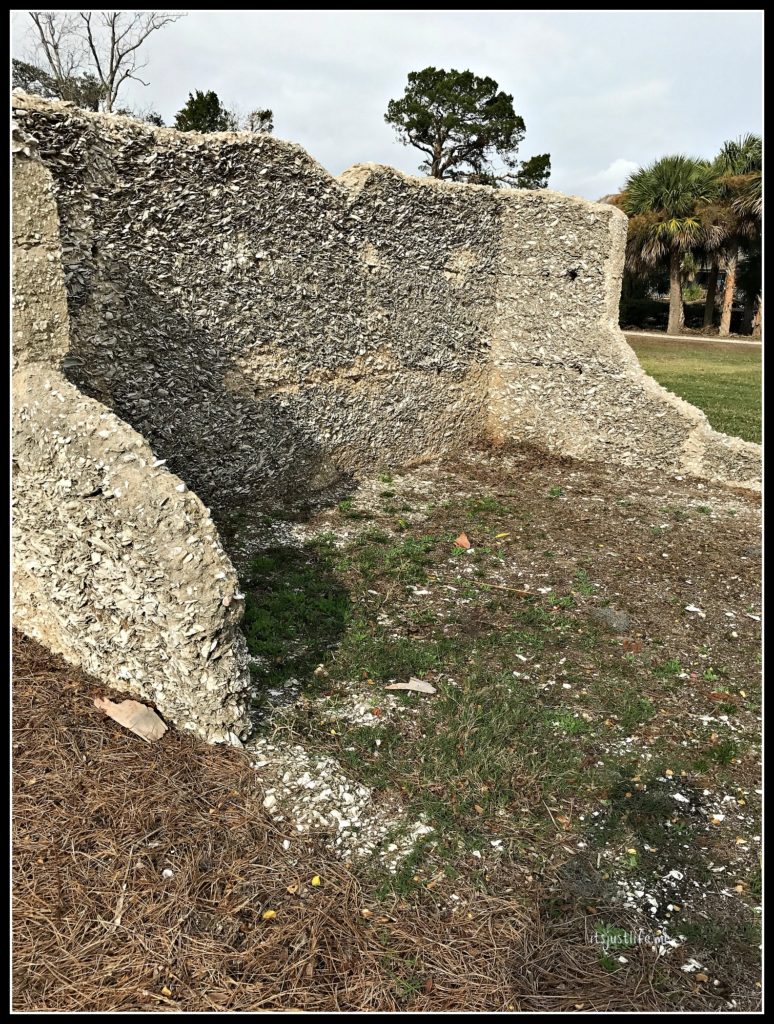
While none of the structures are complete there is enough left for a visitor to imagine what the little complex might have looked like at the time when it was in use.
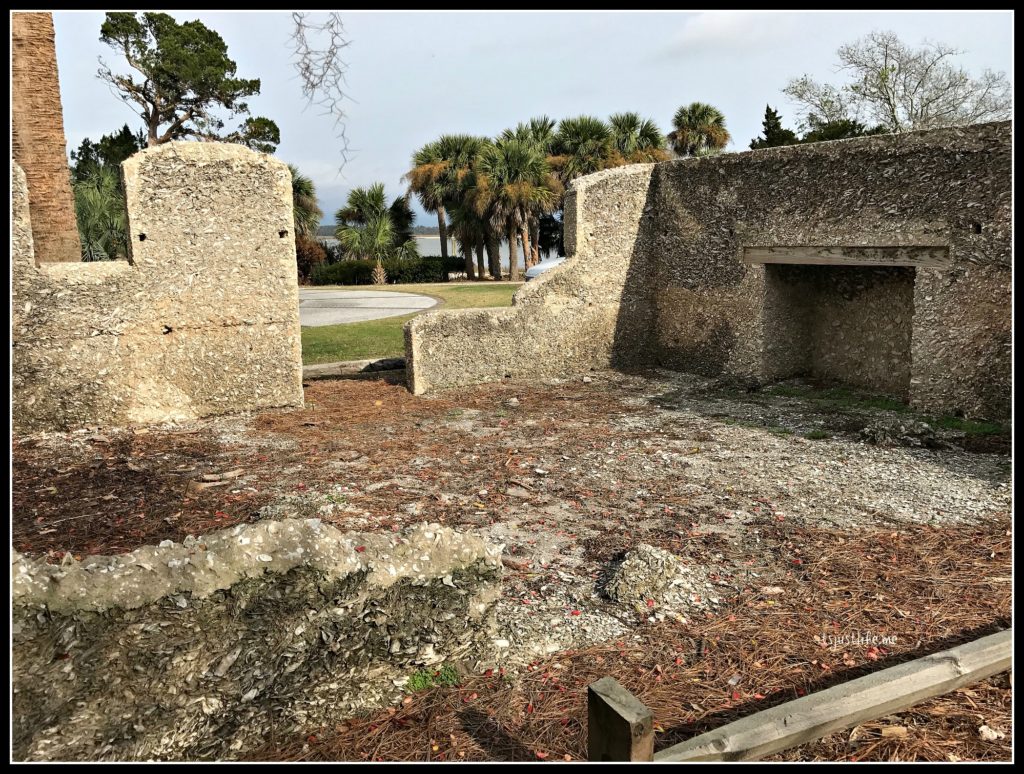
There appear to be 3 smallish buildings, a larger building that might have housed a communal area and then ten smaller structures that most likely provided housing for the slaves.
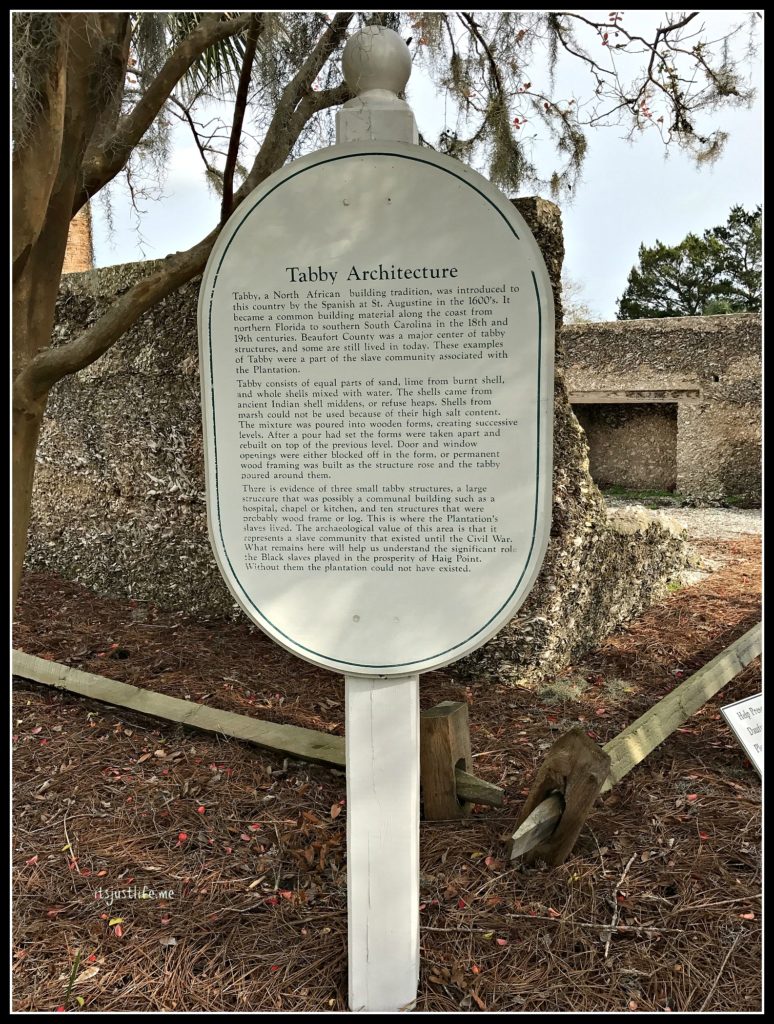
Being able to walk among the remains of these buildings was a pretty amazing experience. They are visible as you approach the island and a walkway winds around them so that visitors and residents alike can take in a bit of history every time they pass by.
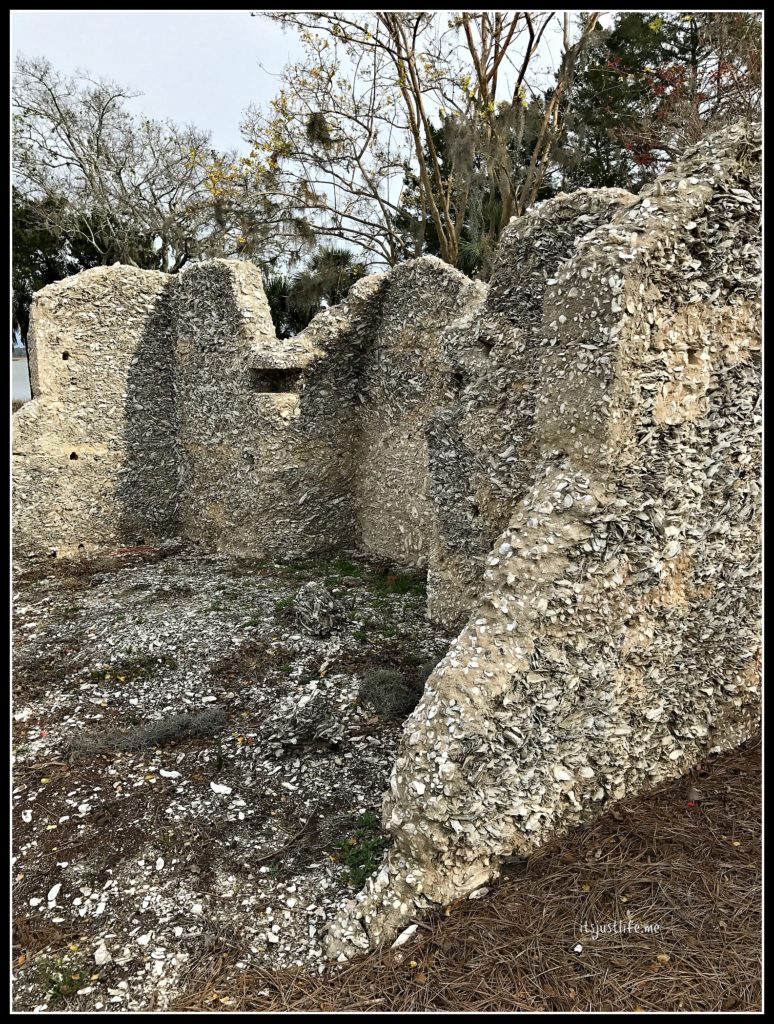
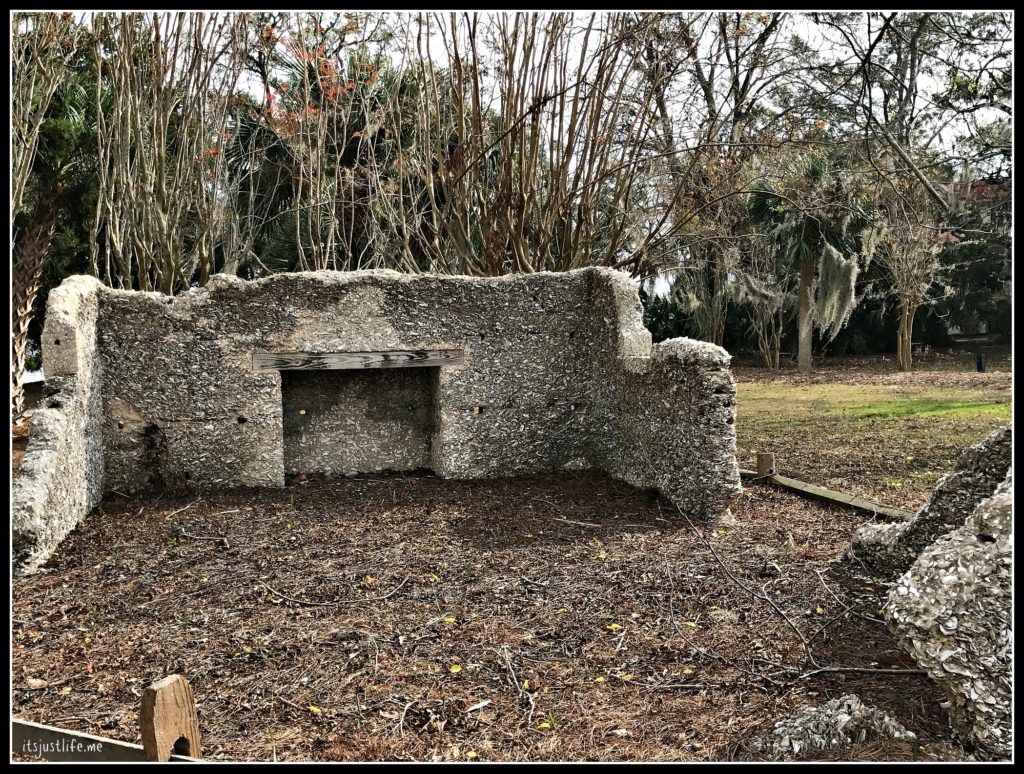
Looking out from the historic area one can see the water, the beach and the lovely view that goes for miles. I loved our morning here. Come back tomorrow to see another great feature on the island that I fell in love with. If you want to read my previous post on Daufuskie Island please click here.






